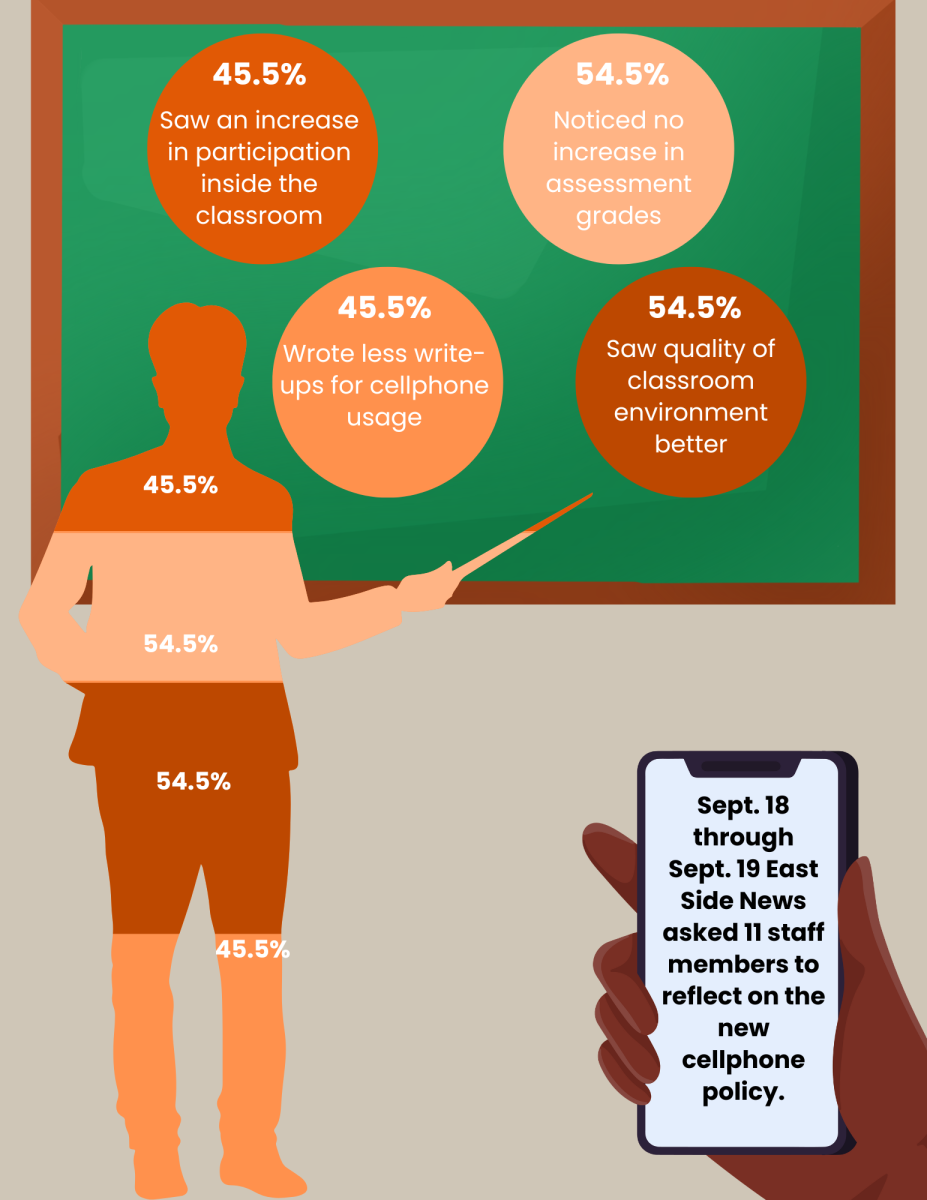As major companies release new tablets, laptops, and phones, teenagers seem to become increasingly reliant on technology.
Last year, the District 202 school board refined the pre-existing cell phone policy, implementing fresh rules in each of the four high schools. The policy states that cell phones are to be turned off and out of sight for the 56 minute instructional period. Then, warnings are issued, gradually building up to the consequence of a contract between students and their teachers.
“I think that this [cell phone usage] is not just a school issue, but a societal one as well. There is a time and place that phones can and should be used. The technology that we have today should be used to help and support us but in school we are finding that it is becoming a distraction,” said Mrs. Cindy Egizio, Associate Principal of Curriculum and Instruction.
A year later, the effectiveness of the cell phone policy at Plainfield East was analyzed. East Side News released a Google Form for staff to record their observations. 45.5% of the teachers who participated stated that they wrote less reports for students using their cell phone, and 54.5% reported that the policy improved the quality of the classroom environment.
However, some teachers did not report an increase in classroom participation, stating that students still require constant reminders on cell phone usage. Many teachers* state the policy is lenient and ineffective, creating more work for staff: reporting students who are seemingly unbothered by the consequences.
The rise of technology plays a large role in the presence of cell phones in the school setting, and the correct course of action is difficult to decide upon as the inappropriate use of cell phones varies.
“I did not have many kids get to the point of needing to complete the contract piece of it. I could probably count on one hand how many kids actually got to that point,” said Mr. Jason Vollmer, Dean of Students, “Students who aren’t on the phone when their teacher is teaching – it didn’t change anything. The vast majority of students were unaffected by it. It really only changed it for the kids who are constantly getting referred for cell phone usage.”
Cell phones in the school setting are a heavily debated topic, there seems to be truth to every side of the story.
“We are currently lonelier than we ever have been as a society, yet we are the most connected by technology. However, that causes us to be lazy and instead of having actual human interaction, we go for the easiest solution and text someone, when we could just walk over to and talk to them,” said Mr. Waznonis, math teacher and Assistant Athletic Director.
Despite mixed responses from staff, PEHS continues to strive for greatness in academics and atmosphere, as does the entirety of District 202. The world is advancing, and thus it is vital to remain open to change and adapt to the challenges presented.
*The study ESN conducted was for research purposes only. Unless otherwise requested for, staff was granted anonymity in their responses.




